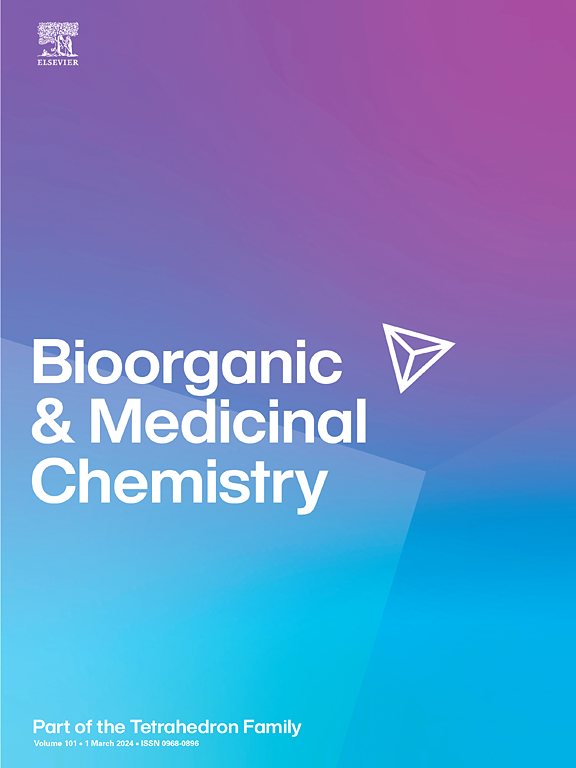Assessment of a 6-arylaminobenzamide lead derivative as a potential core scaffold for S1P5 positron emission tomography radiotracer development
IF 3.3
3区 医学
Q2 BIOCHEMISTRY & MOLECULAR BIOLOGY
引用次数: 0
Abstract
Sphingosine-1-phosphate-5 receptors (S1P5) are predominantly expressed in oligodendrocytes and as a result have been proposed as an important target in Multiple Sclerosis (MS). Selective S1P5 radiotracers could enable in vivo positron emission tomography (PET) imaging of oligodendrocytes activity. Here we report the synthesis, radiolabelling and first preclinical evaluation of the pharmacokinetics and binding properties of a lead 6-arylaminobenzamide derivative, 6-(mesitylamino)-2-methoxy-3-methylbenzamide (also named as TEFM180), as a potential core scaffold for development of novel S1P5 PET radiotracers. Following intravenous bolus injection, TEFM180 was found to quickly enter the brain with good brain:blood ratios and subsequent rapid clearance. Autoradiography studies showed that [3H]TEFM180 had a high affinity for its target (KD = 2.8 nM), with moderate levels of non-displaceable binding. Distribution of [3H]TEFM180 in the brain was found to be consistent with S1P5 expression and showed a binding potential (BP) of >2–3 in white matter rich regions. Overall, TEFM180 offers a good initial platform for development of future radiotracers targeting S1P5.

6-芳基氨基苯甲酰胺铅衍生物作为S1P5正电子发射断层扫描放射性示踪剂开发潜在核心支架的评估。
鞘氨醇-1-磷酸-5受体(S1P5)主要在少突胶质细胞中表达,因此被认为是多发性硬化症(MS)的一个重要靶点。选择性S1P5放射性示踪剂可以实现体内少突胶质细胞活性的正电子发射断层扫描(PET)成像。在这里,我们报道了6-芳基氨基苯甲酰胺衍生物6-(mesitylamino)-2-甲氧基-3-甲基苯甲酰胺(TEFM180)的合成、放射性标记和药物动力学和结合特性的首次临床前评估,作为开发新型S1P5 PET放射性示踪剂的潜在核心支架。经静脉注射后,TEFM180迅速进入大脑,脑血比良好,随后清除迅速。放射自显影研究表明,[3H]TEFM180对靶标具有高亲和力(KD = 2.8 nM),具有中等水平的不可置换结合。[3H]TEFM180在脑内的分布与S1P5表达一致,在白质富集区显示> -3的结合电位(BP)。总的来说,TEFM180为未来针对S1P5的放射性示踪剂的开发提供了一个良好的初始平台。
本文章由计算机程序翻译,如有差异,请以英文原文为准。
求助全文
约1分钟内获得全文
求助全文
来源期刊

Bioorganic & Medicinal Chemistry
医学-生化与分子生物学
CiteScore
6.80
自引率
2.90%
发文量
413
审稿时长
17 days
期刊介绍:
Bioorganic & Medicinal Chemistry provides an international forum for the publication of full original research papers and critical reviews on molecular interactions in key biological targets such as receptors, channels, enzymes, nucleotides, lipids and saccharides.
The aim of the journal is to promote a better understanding at the molecular level of life processes, and living organisms, as well as the interaction of these with chemical agents. A special feature will be that colour illustrations will be reproduced at no charge to the author, provided that the Editor agrees that colour is essential to the information content of the illustration in question.
 求助内容:
求助内容: 应助结果提醒方式:
应助结果提醒方式:


